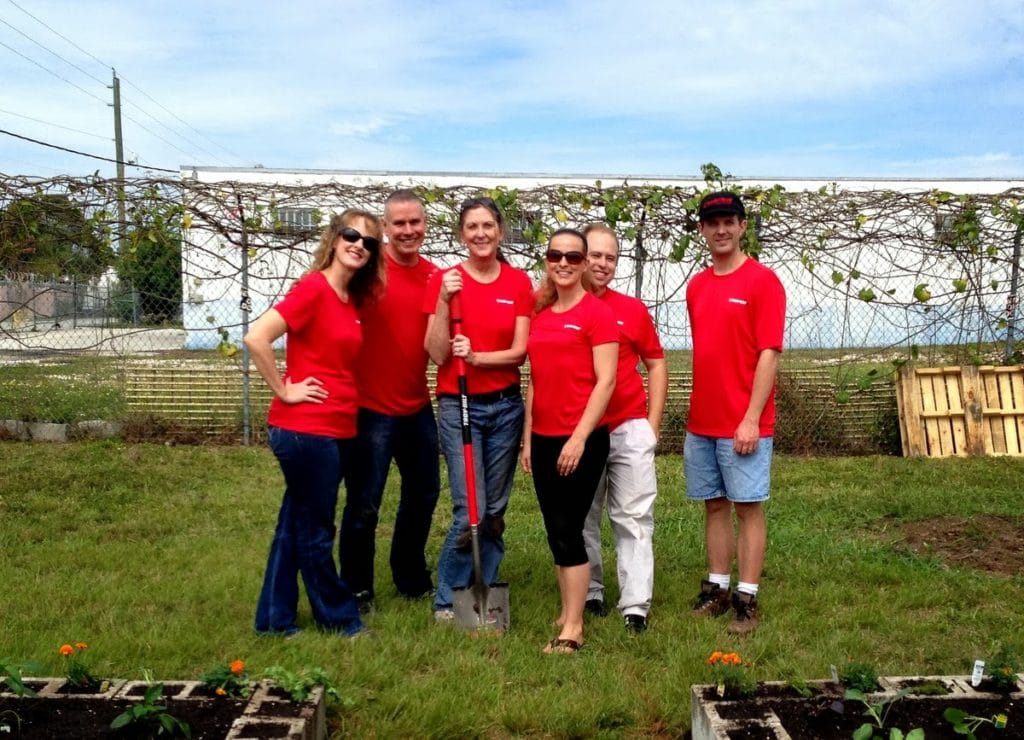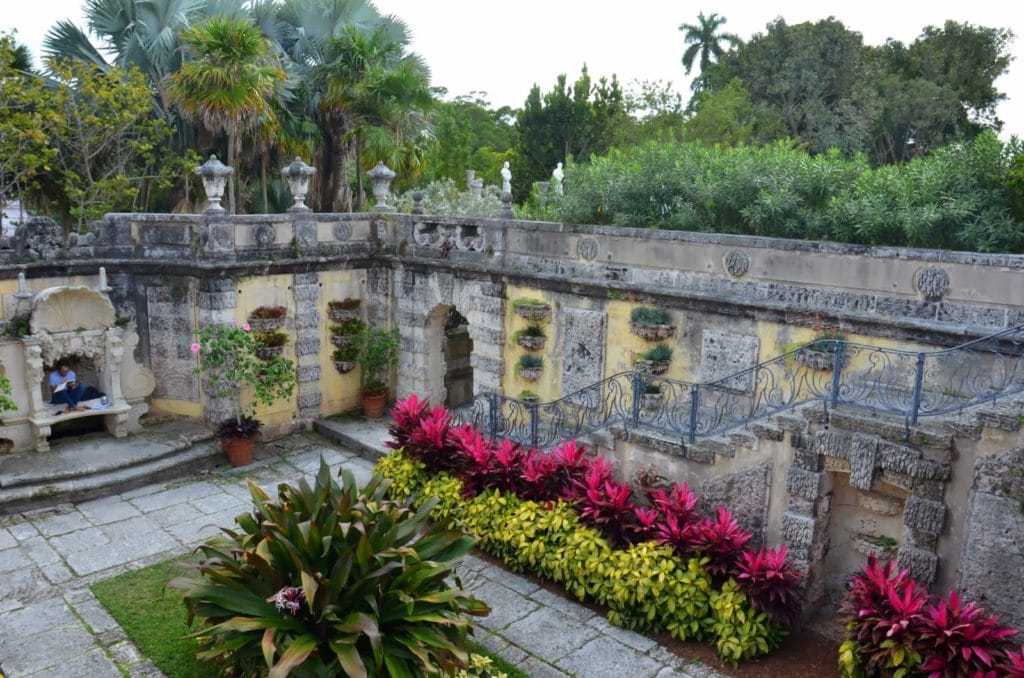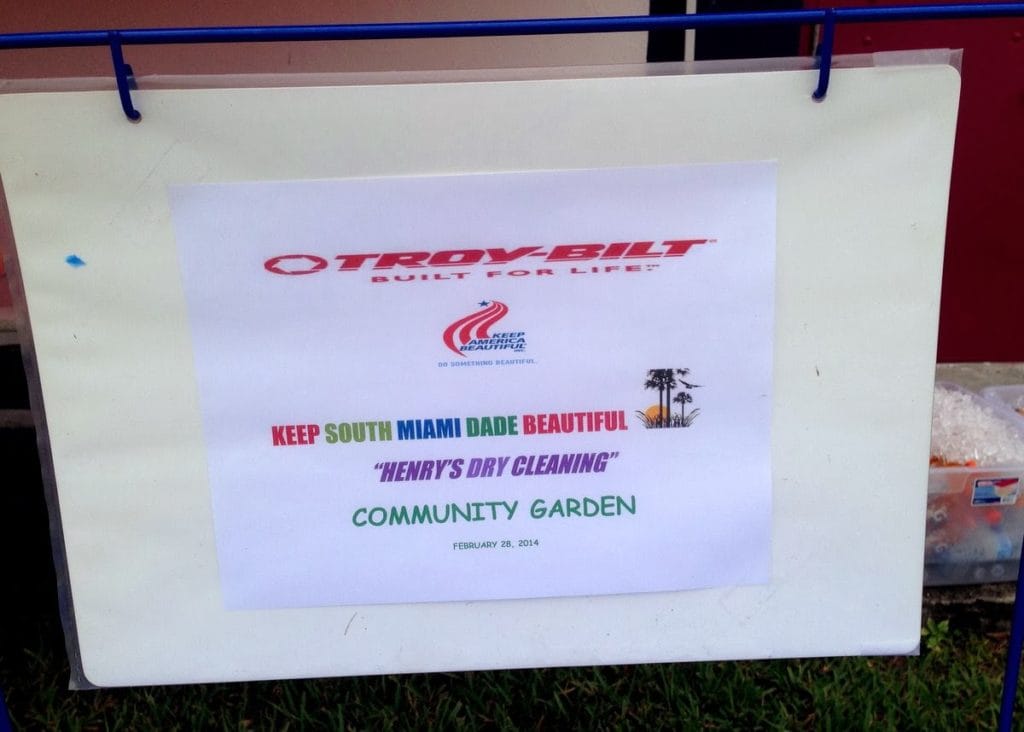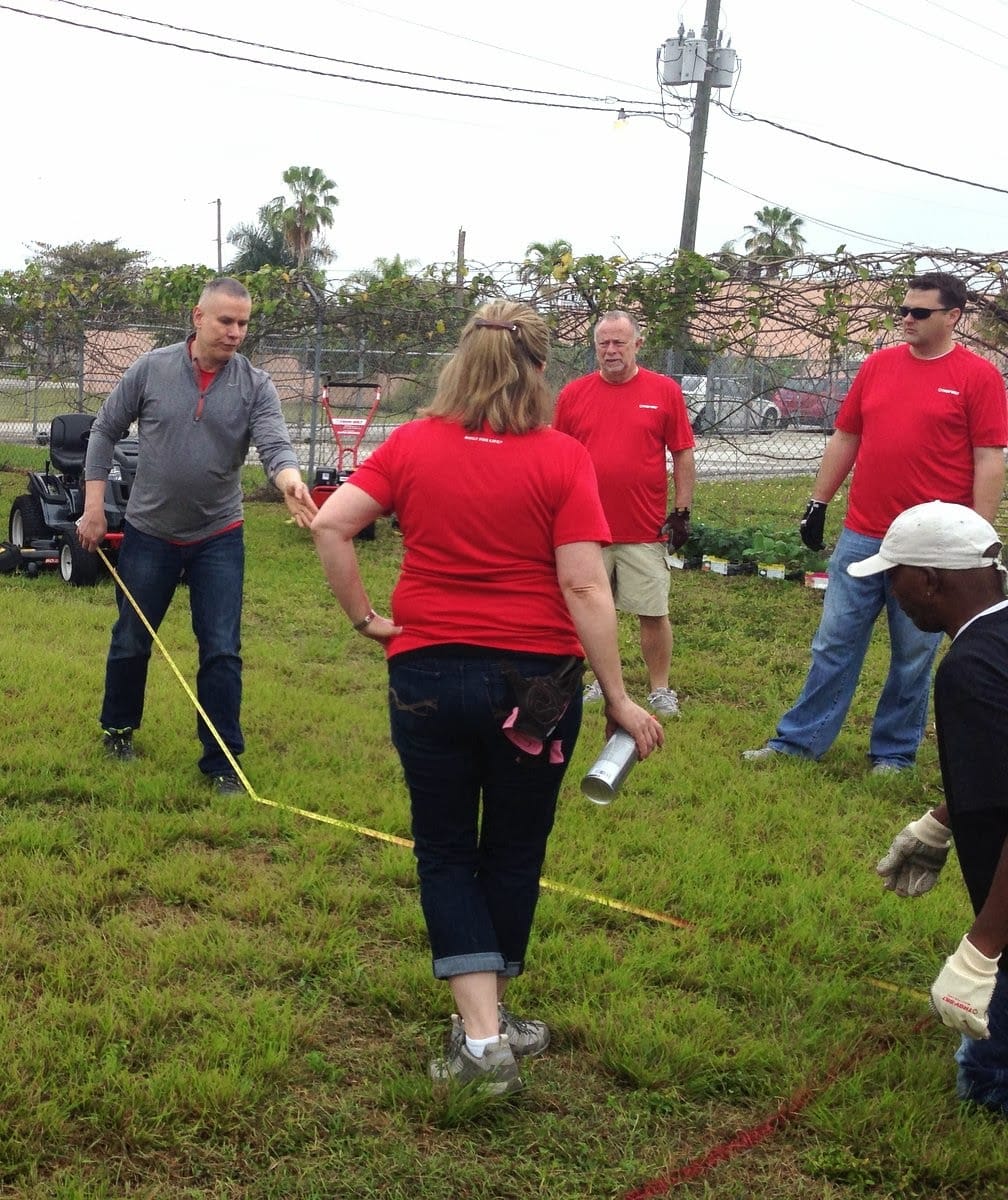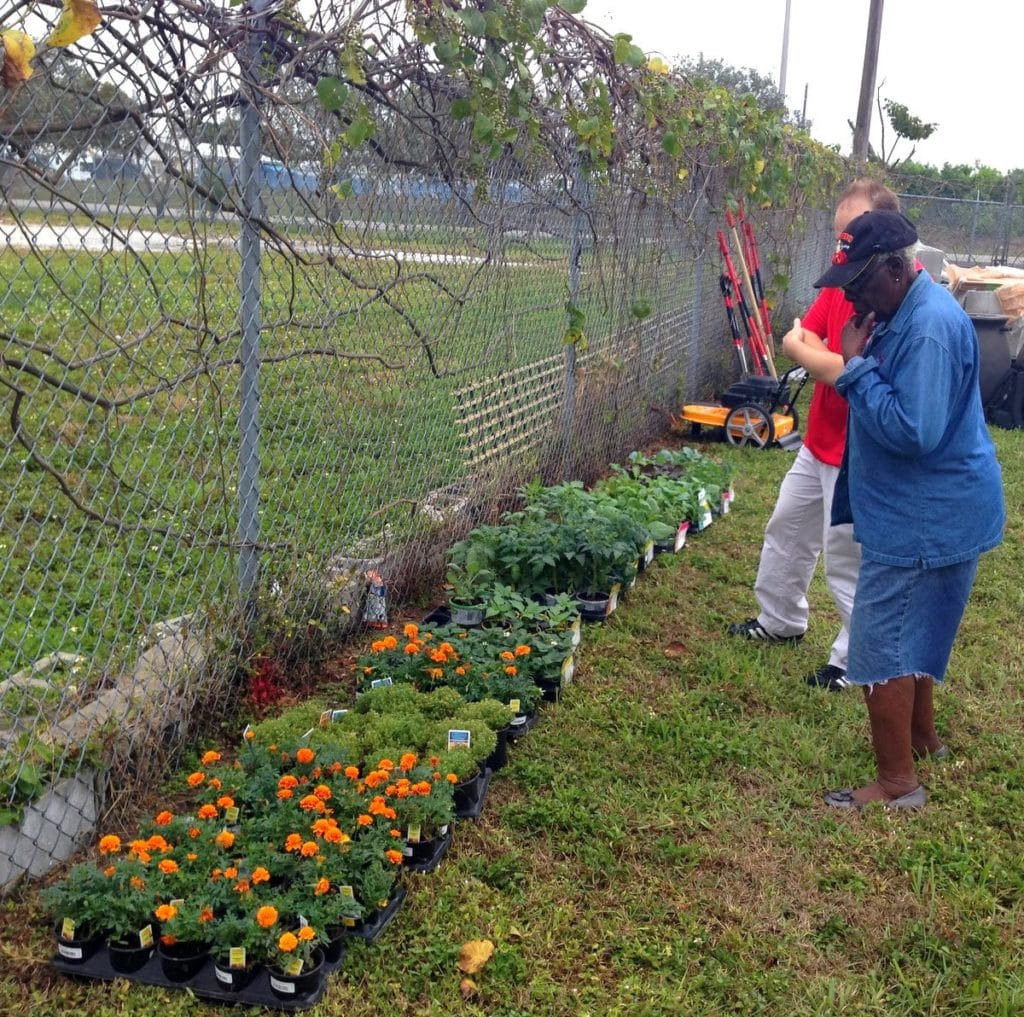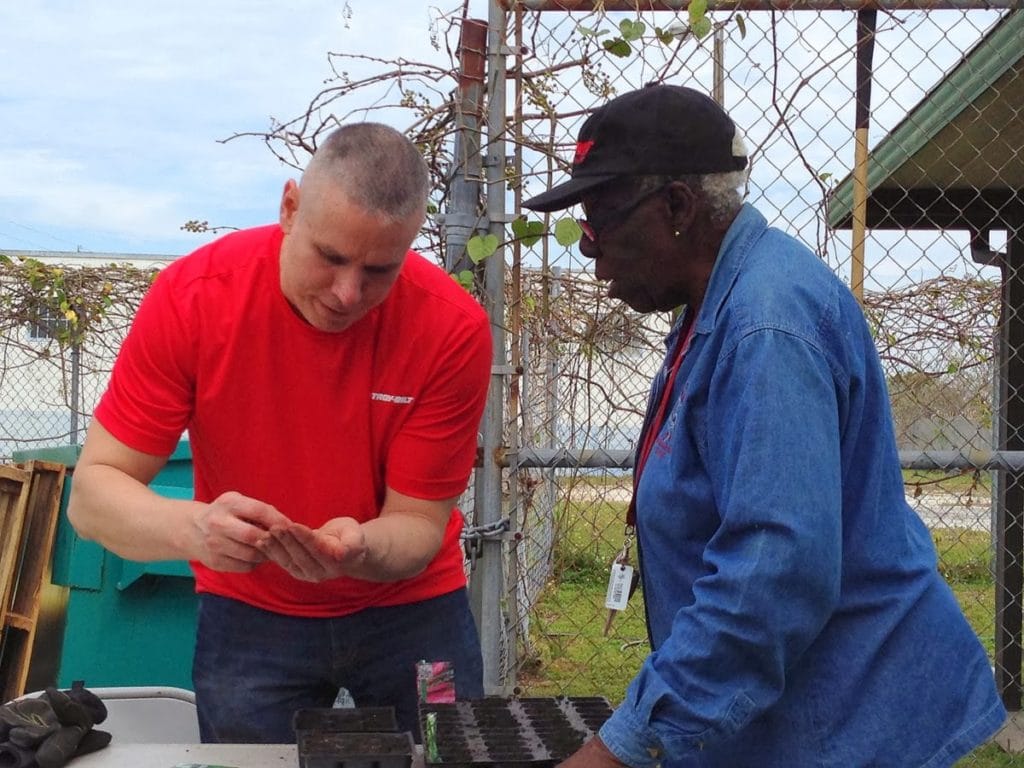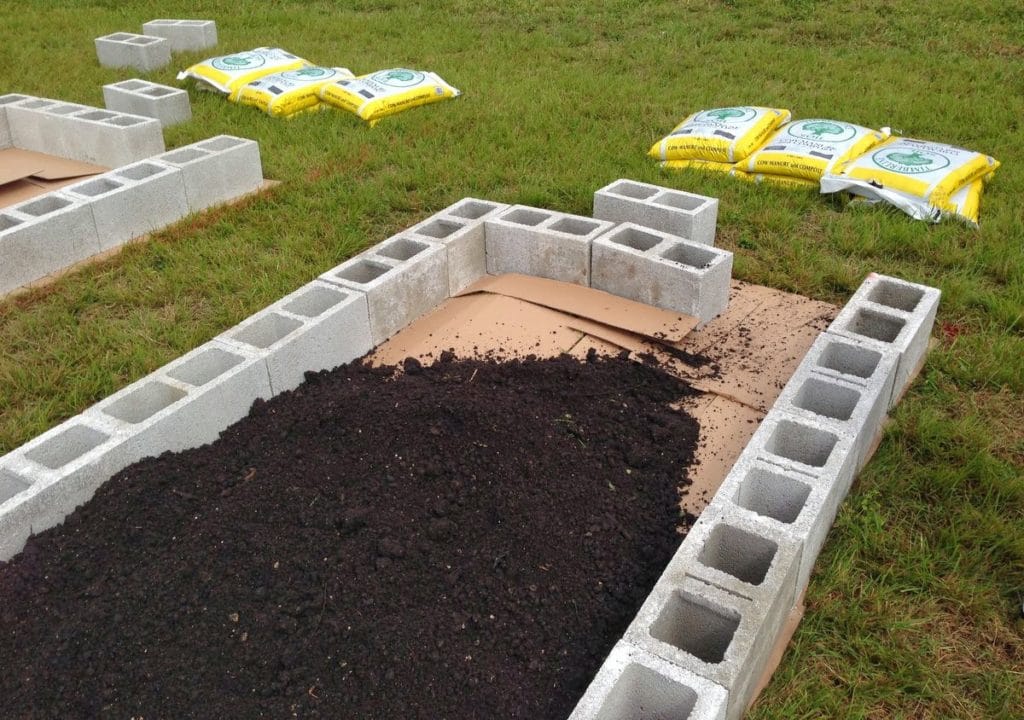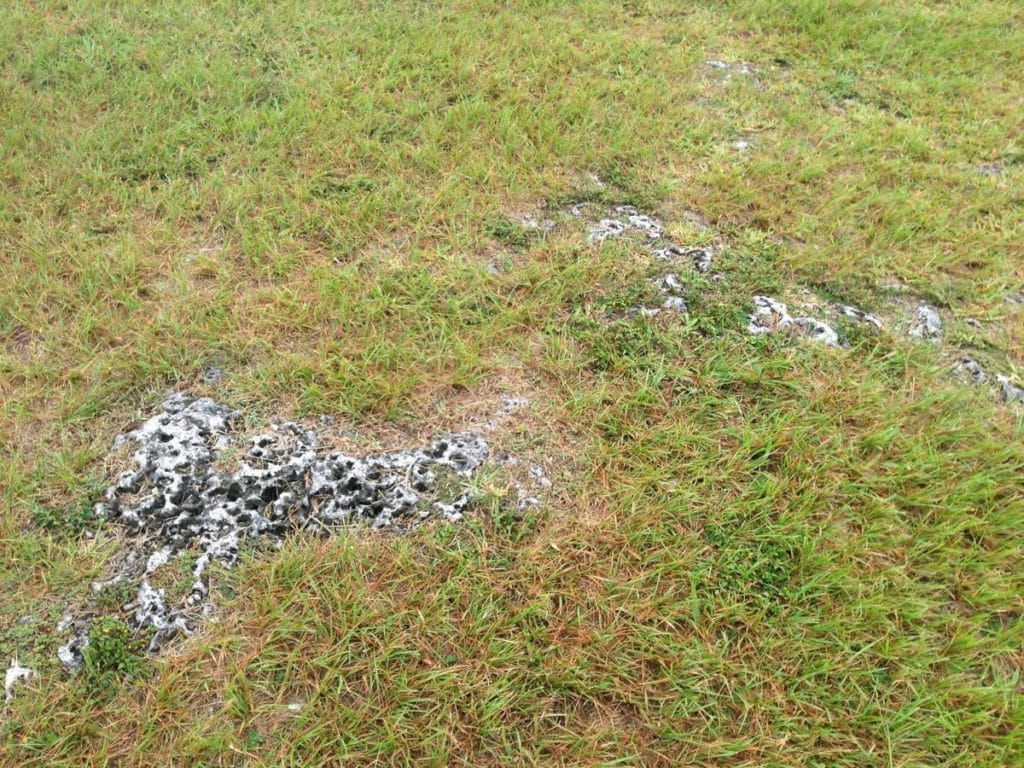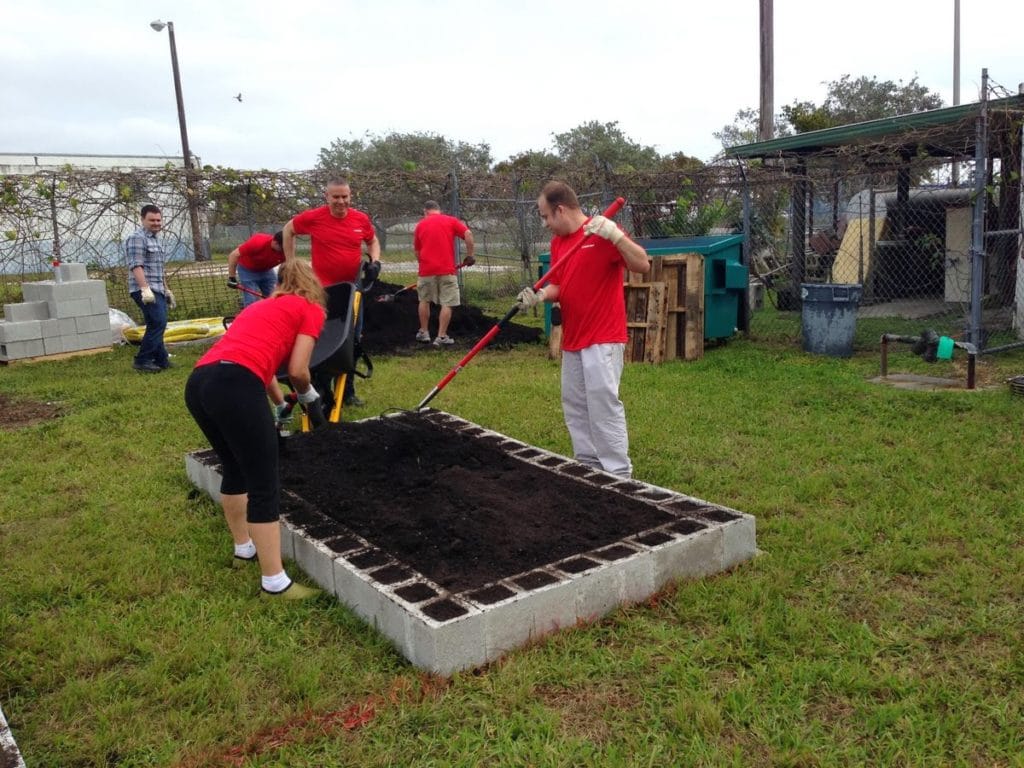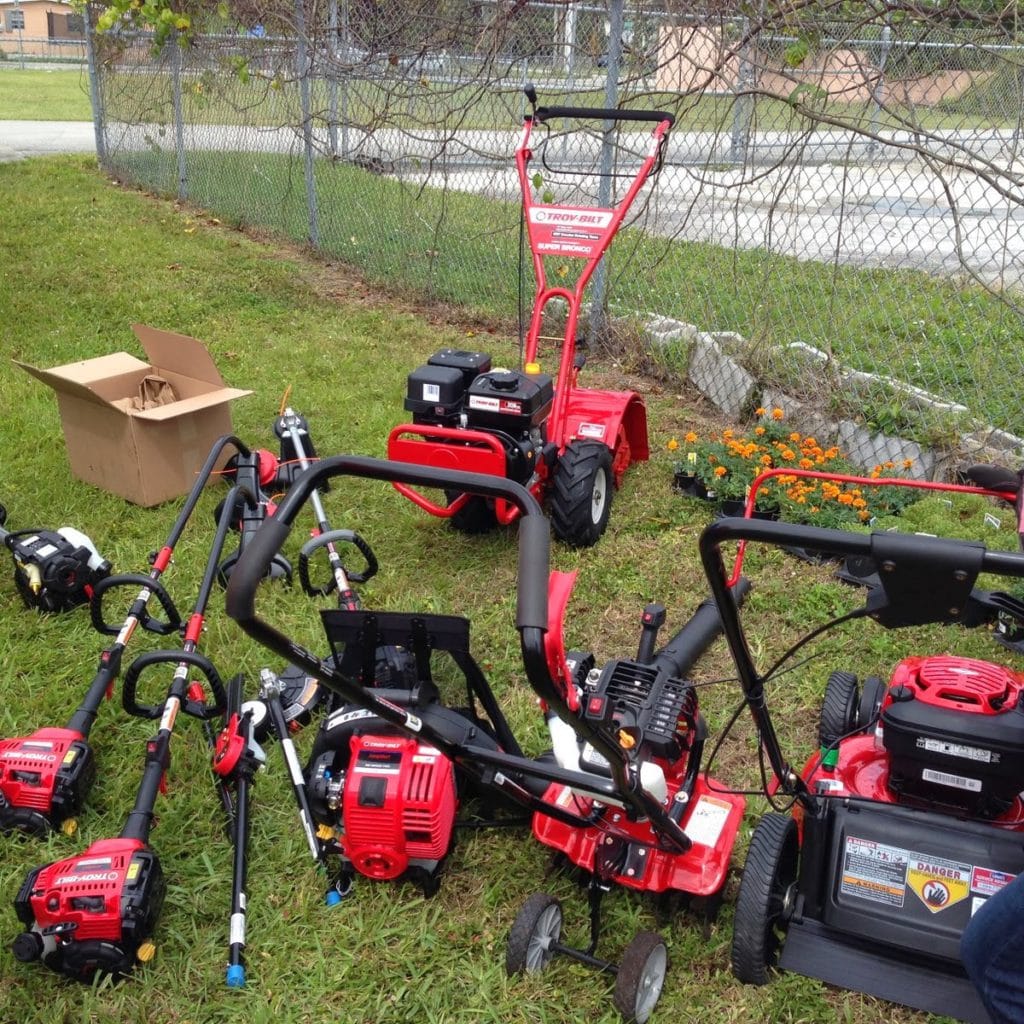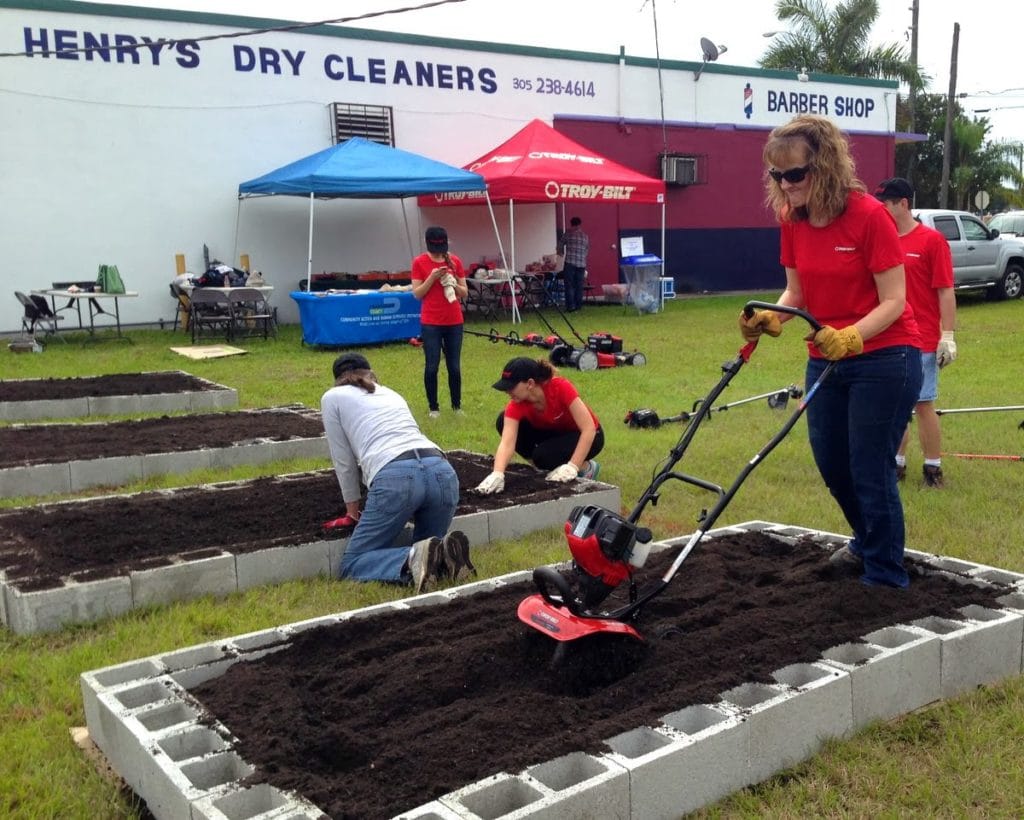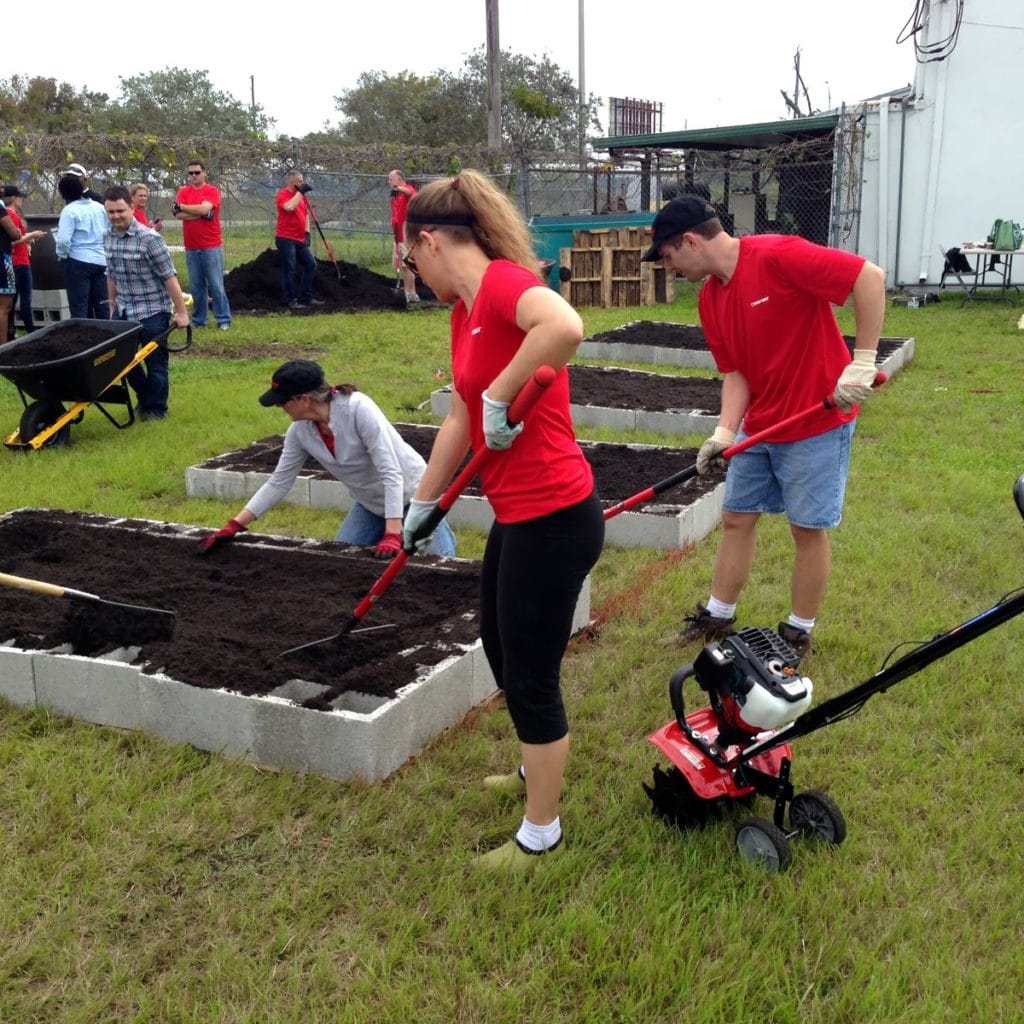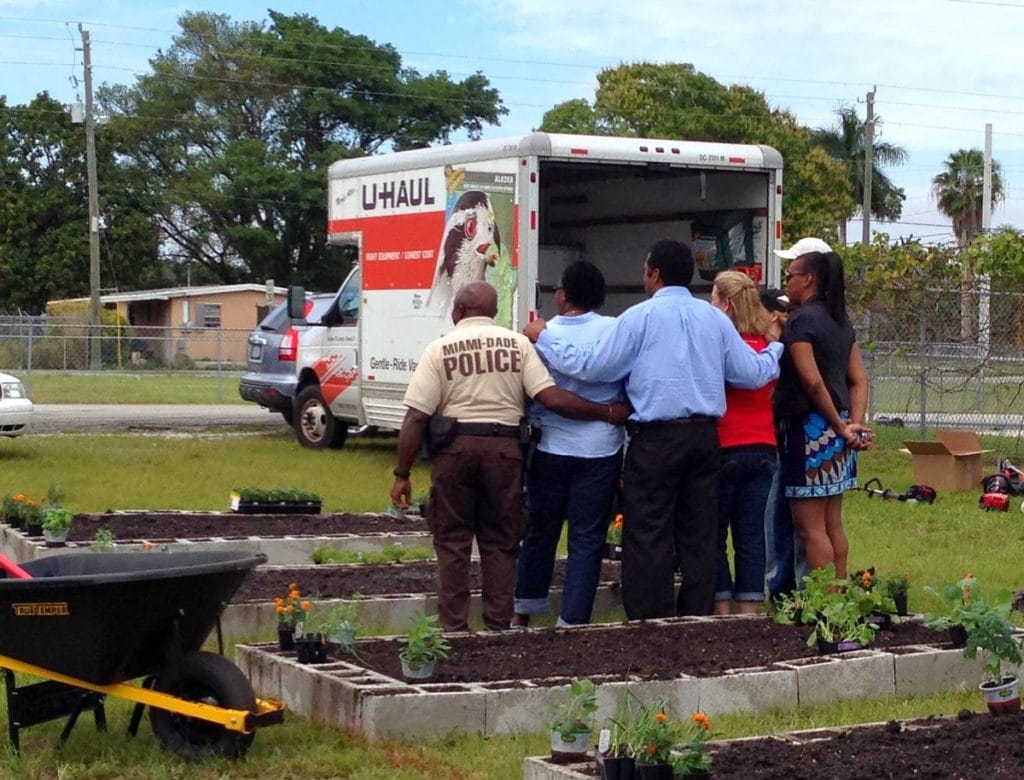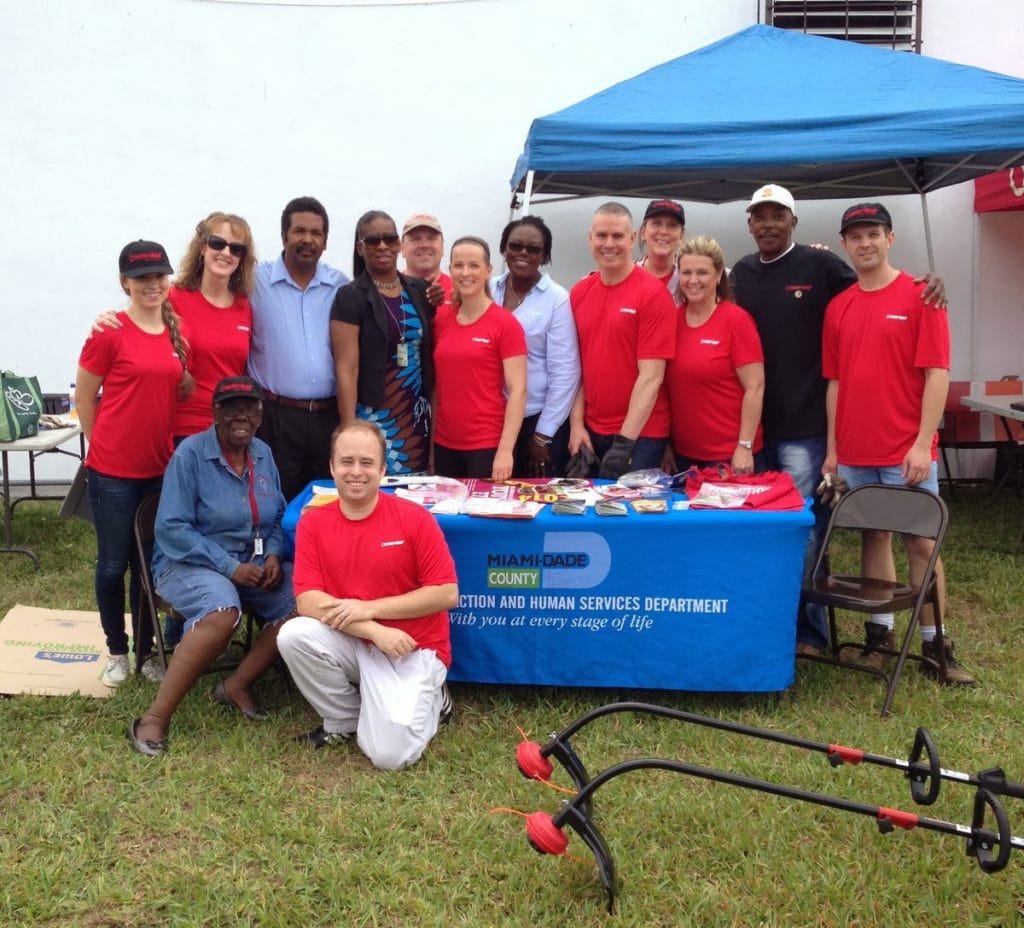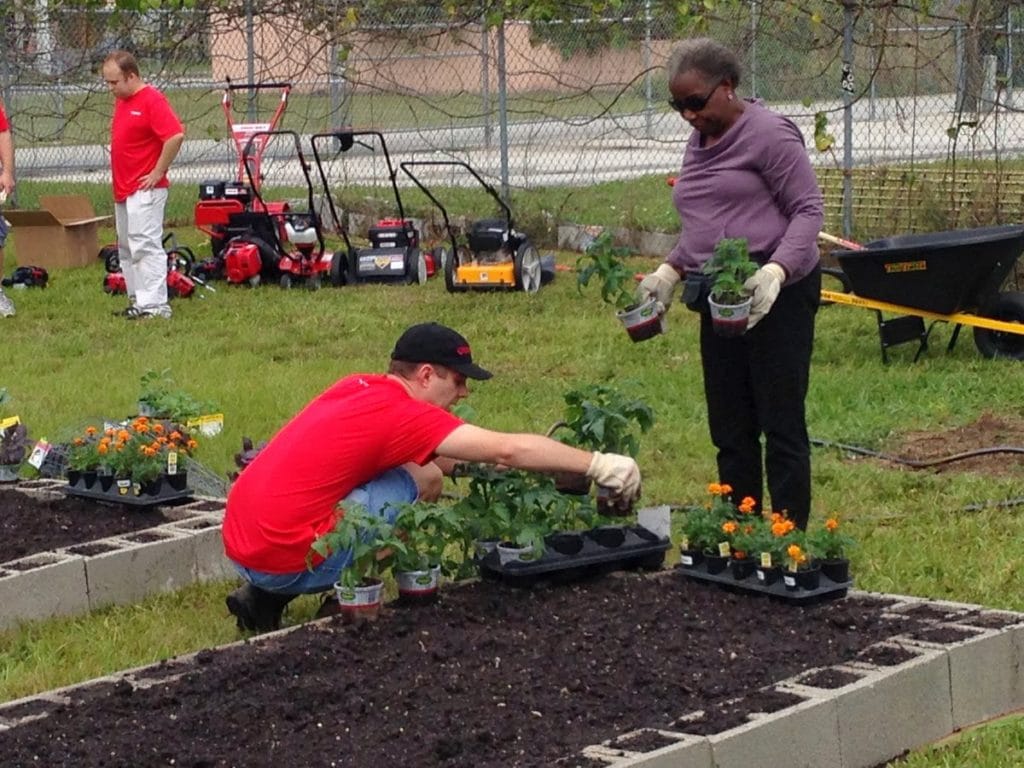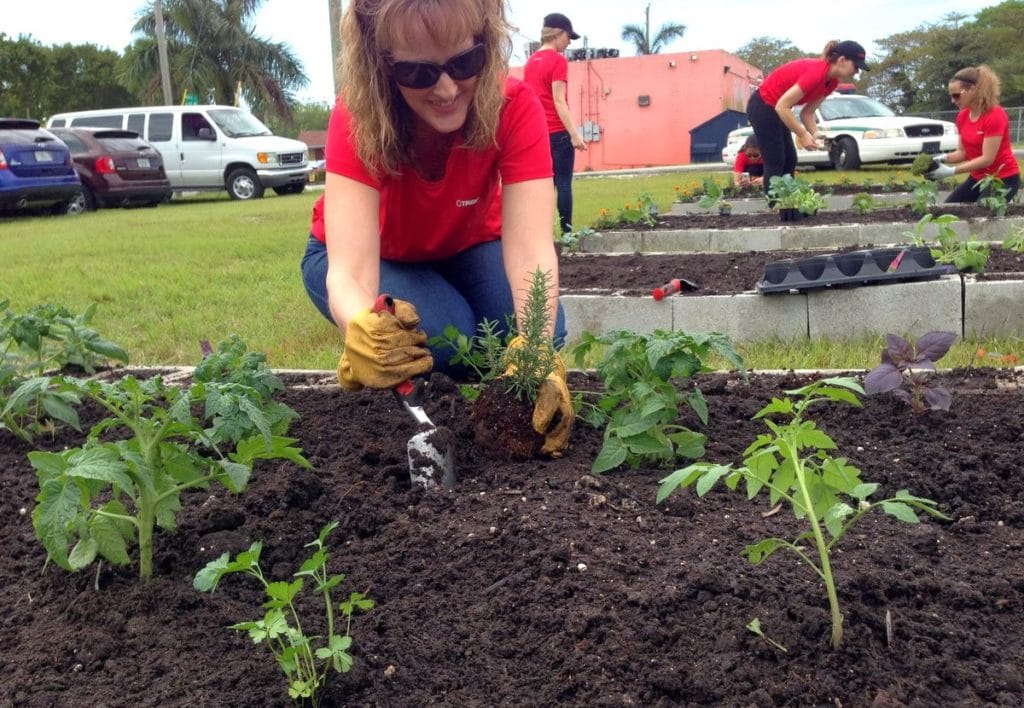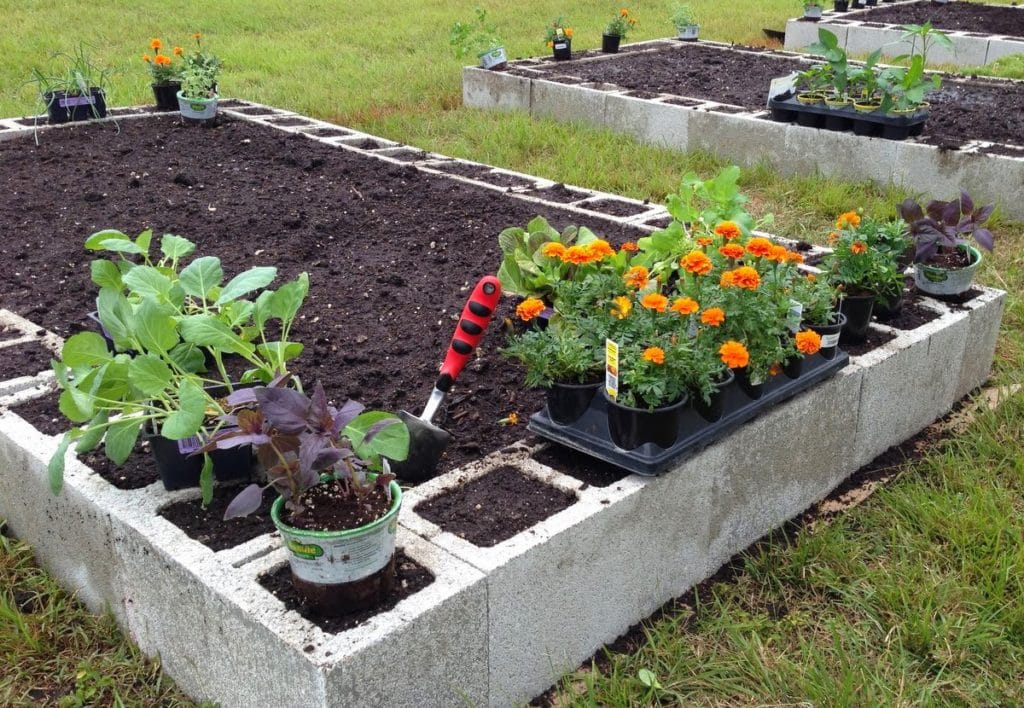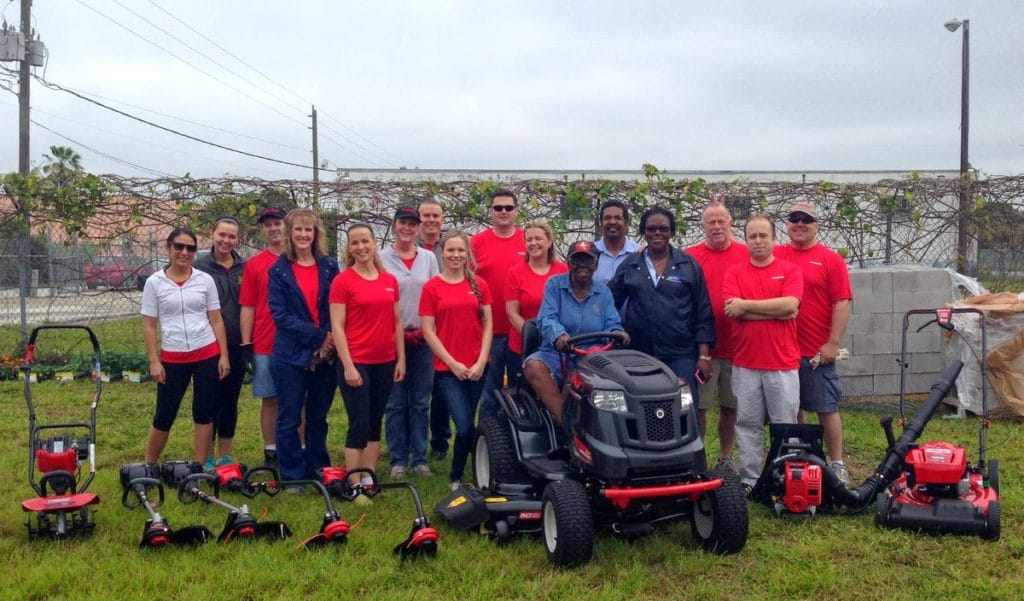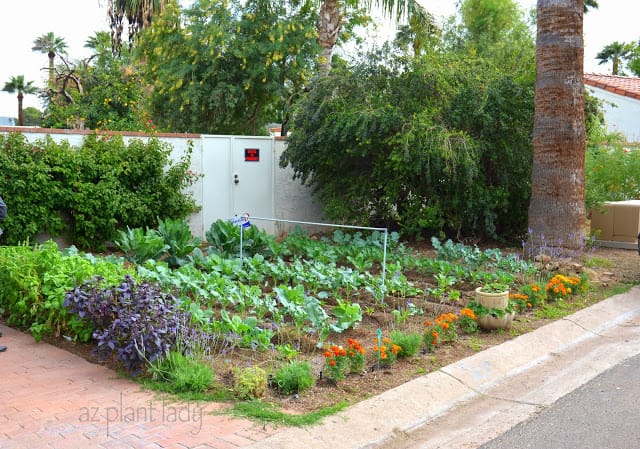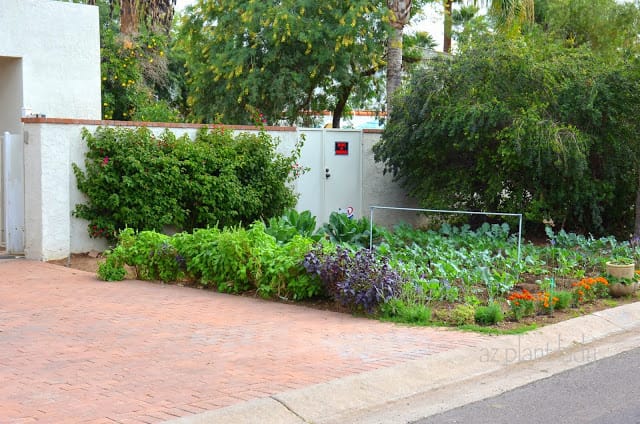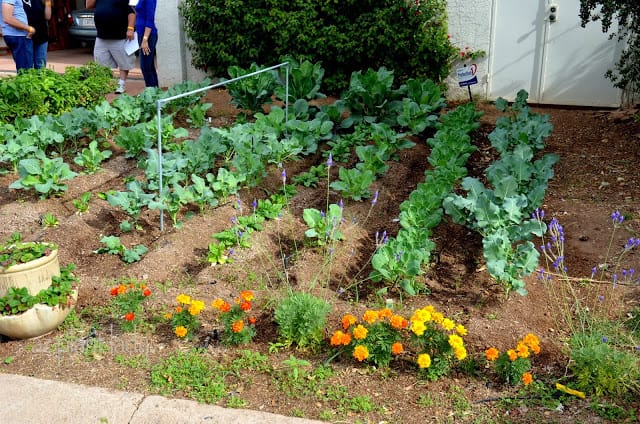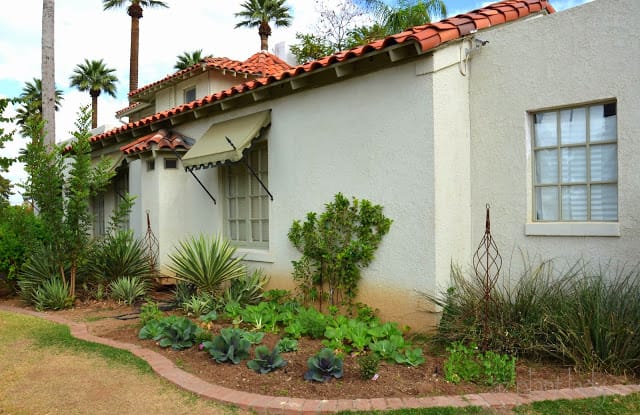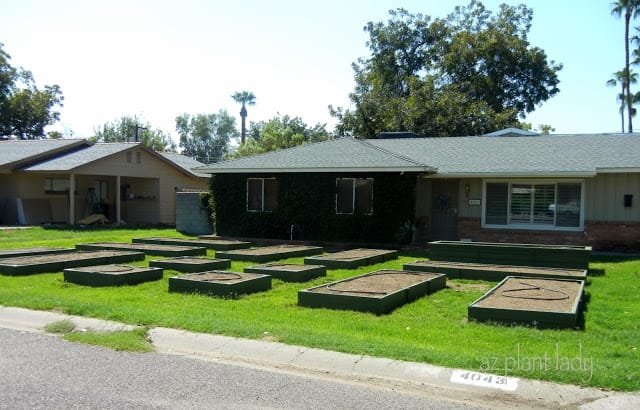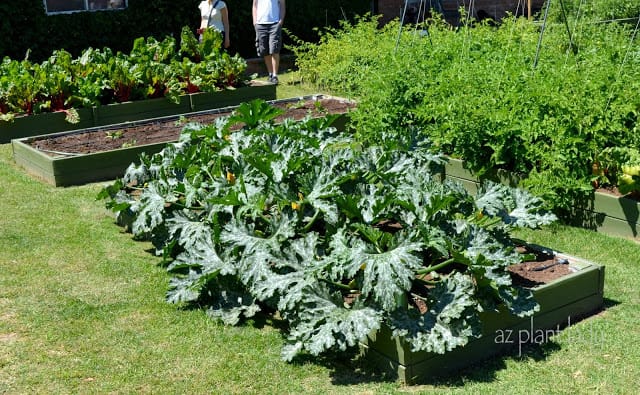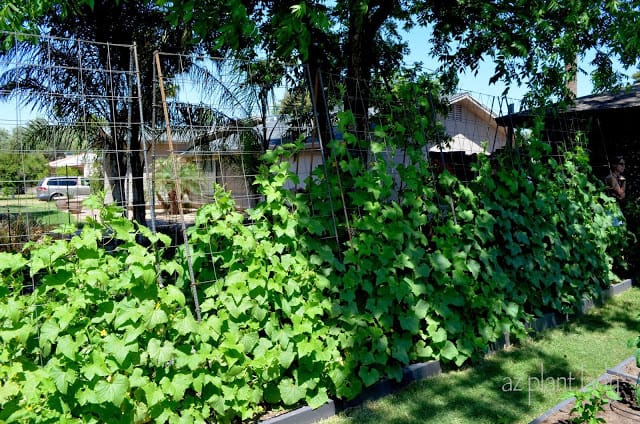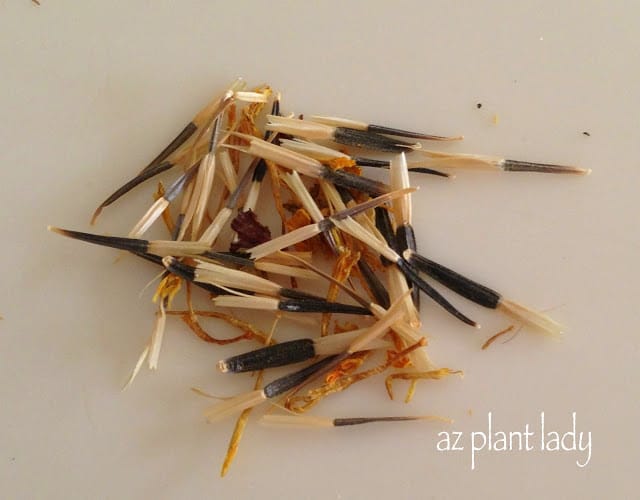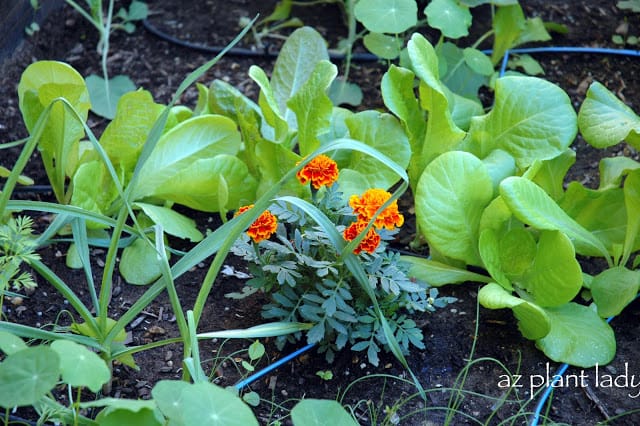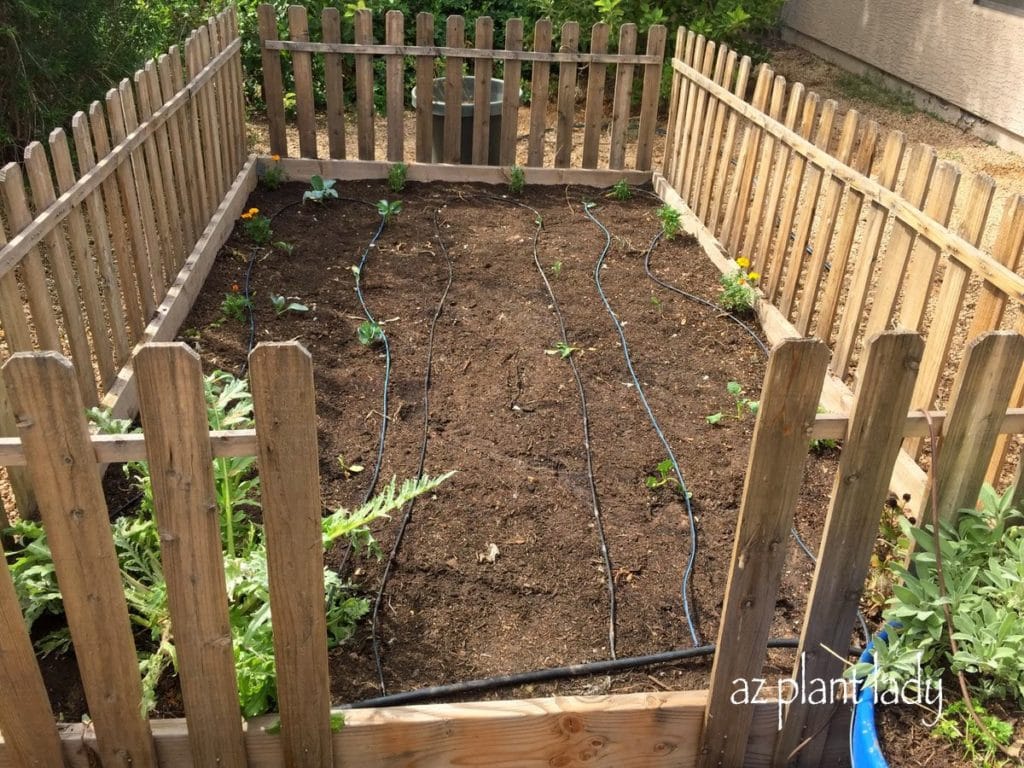
*This blog post contains affiliate link for a product that helps get rid of caterpillars. If you click through and make a purchase, I may receive a commission (at no additional cost to you). Thanks for your support in this way.*
Fall is a busy time for me in the garden. However, you will usually find me in other people’s gardens helping them achieve their goal of a beautiful, low-maintenance garden. I did manage to get my cool-season vegetable gardens planted. I planted my favorites, which include carrots, cauliflower, garlic, a variety of leaf lettuces and radishes.
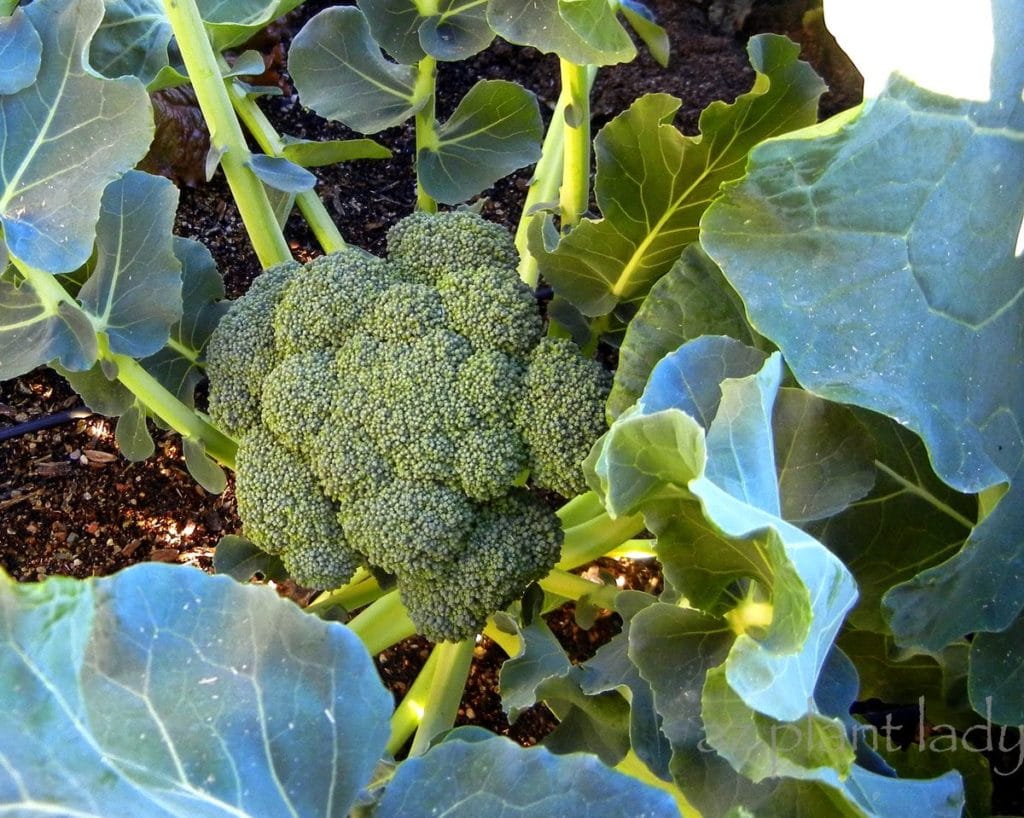
I included broccoli in my list of vegetables this year, despite the fact that I have yet to grow a healthy head of broccoli (the broccoli in the photo above is from my mother’s garden).
Every year, I grow beautiful cauliflower while my broccoli decides to produce very few flowering stalks. At the end of the season when I look at my less than stellar broccoli harvest – I promise myself that I won’t try again.
But, after 6 months pass, I am always tempted to try again hoping that this year will be different.
With the exception of carrots and radishes, I planted all of my other vegetables from transplants. Normally, I almost always use seed, (with the exception of broccoli and cauliflower, which do better when grown from transplants) but I knew that I wouldn’t have time to come out and thin excess plants later.
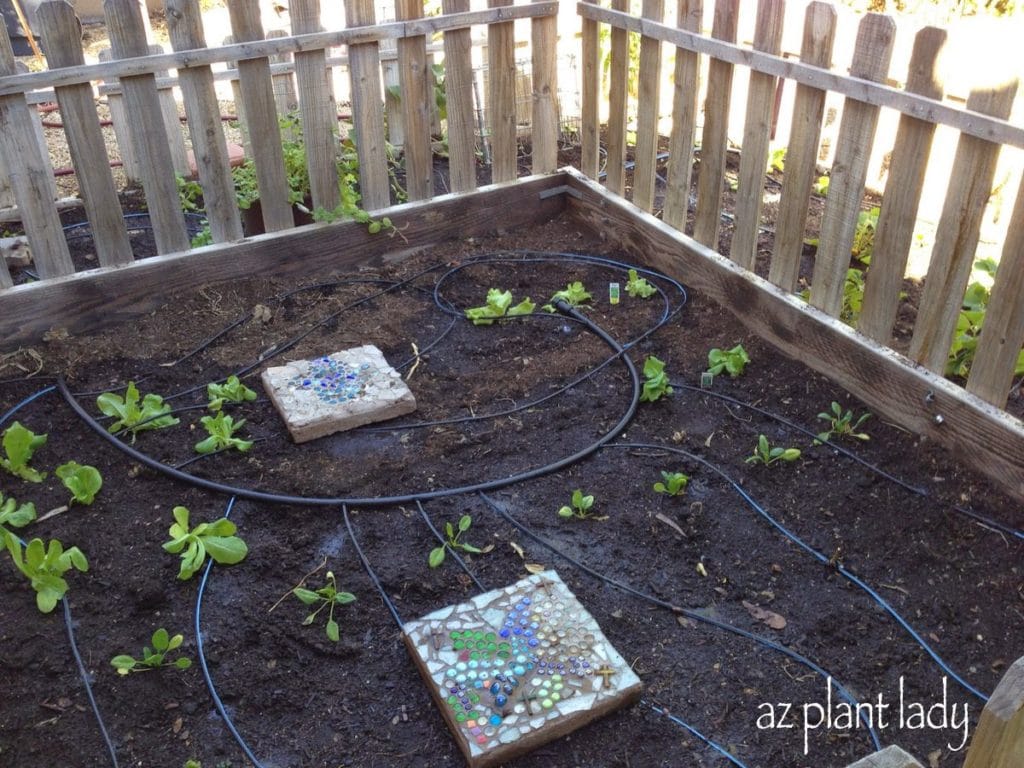
This smaller vegetable garden is closer to my kitchen and so I put in vegetables that I would harvest more frequently throughout the season in this area. Leafy greens such as lettuce, Swiss chard, spinach and kale all went in here.
The larger garden is a bit further away and so it was planted with broccoli, cauliflower, carrots, garlic and radishes, which are harvested once.
My artichoke plant from next year died back to the ground in the summer, (which is normal by the way) and is now growing again.
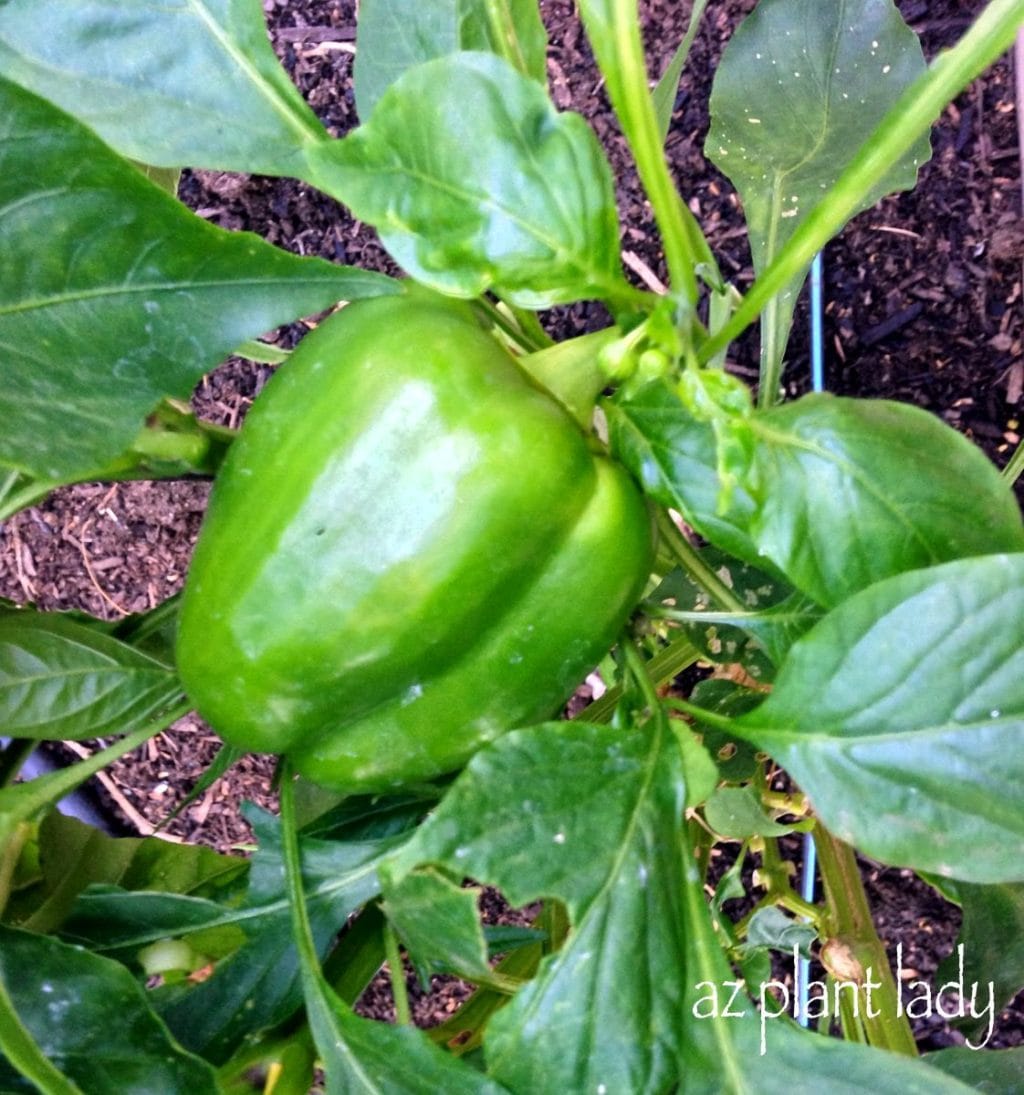
In addition to my artichoke, my bell pepper plant is also a holdover from last year’s garden. Actually, it is 2 years old. Although pepper plants can die from freezing temperatures, I protect mine when the temps dip below freezing, so they are qutie large and produce a lot of peppers much to the delight of my husband and children who like to eat the bell peppers raw.
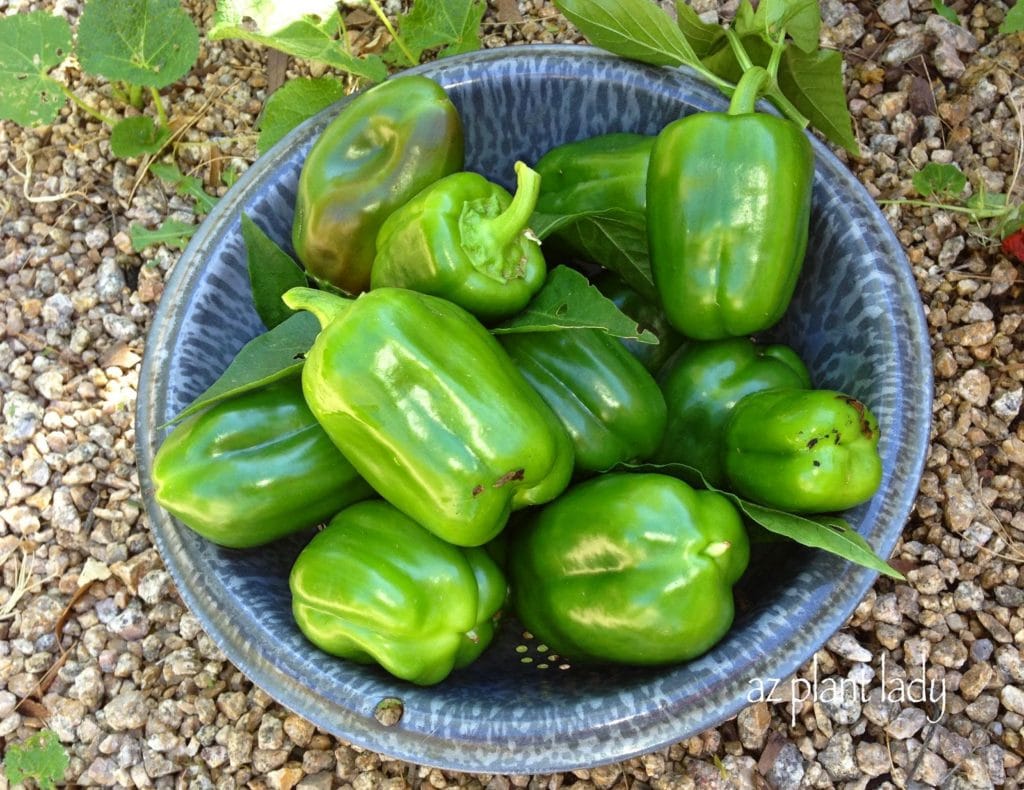
I also dice them and freeze them for using in my favorite Mexican rice recipe.
I’ve already had to spray my leafy greens with BT (Bacillus thuringiensis) to deal with the caterpillars that had started to eat holes in the leaves. It worked great, but I will need to reapply every once in a while. I use Safer Brand 5163 Caterpillar Killer II Concentrate, 16 oz.
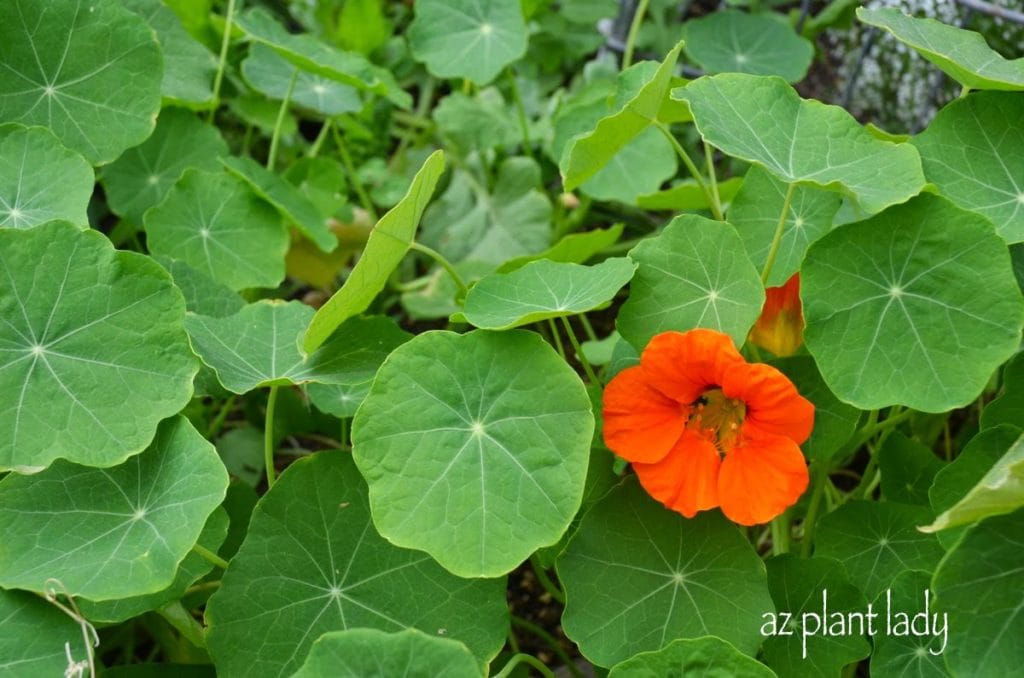
Nasturtiums are coming up again from seed in the gardens. I just let them go to seed each year and they always come back. I use nasturtiums in my vegetable gardens because they repel bad bugs. Besides, they look pretty, don’t you think?
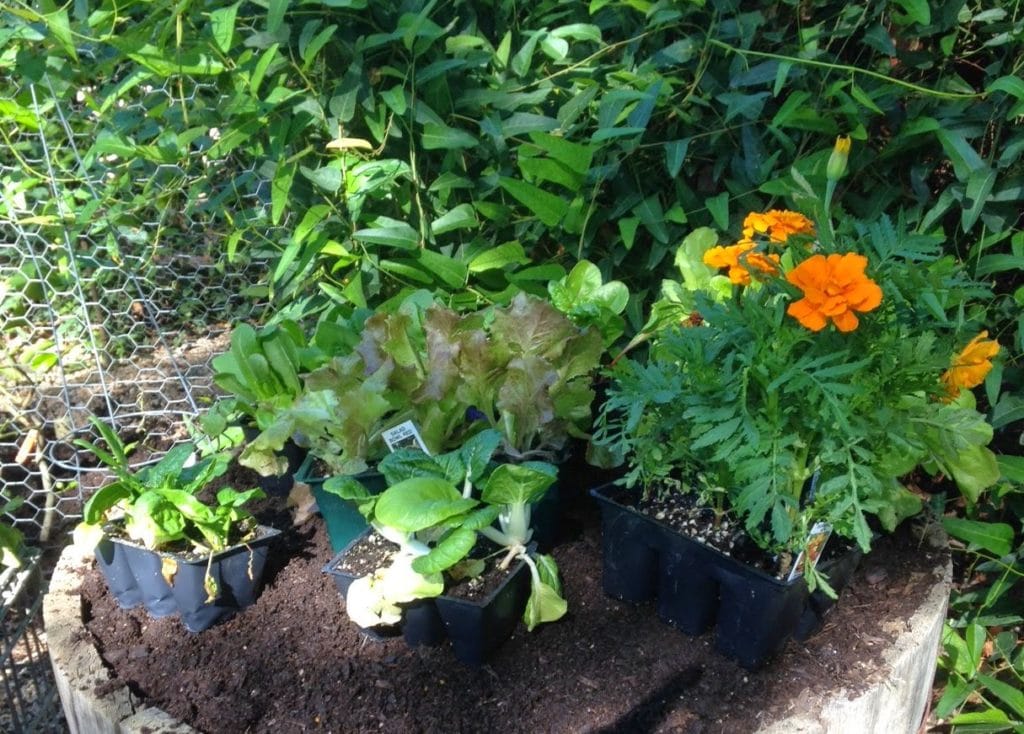
Nasturtiums aren’t the only flowers in my vegetable gardens – marigolds are also great at keeping damaging insects at bay. This year, I planted a marigold at the end of each row of vegetables.
I love how their orange flowers brighten up the garden in the middle of winter. Marigolds and nasturtiums are just a few of the flowers who actually help vegetables. For more information on other plants to include in your vegetable garden you can visit my previous post, “Even Vegetables Need Friends”.
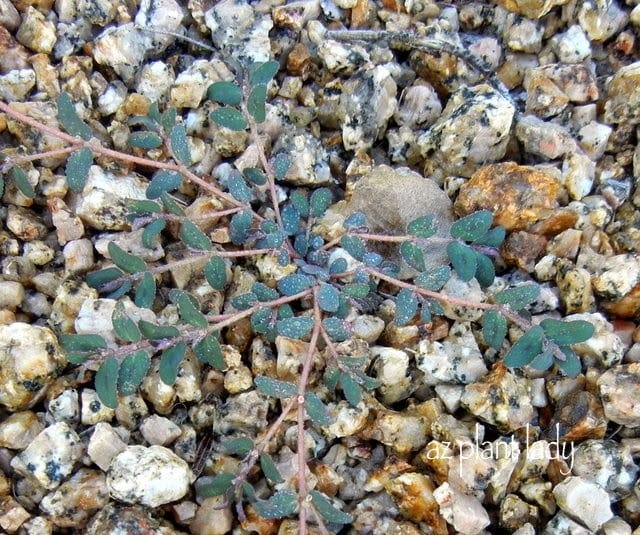
I am having a problem in one of my vegetable gardens that began this past summer – spurge! I have come to truly hate this creeping weed and it has decided to move from the nearby landscape areas into my vegetable garden.
It got pretty bad last summer and we ripped it all out. To help combat it, we added 4 inches of compost/manure, which did help to smother some of the weeds. But, some are still coming up. So, I go out every week and spray them with my homemade weed killer, taking care not to spray my vegetables by accident.
You may see homemade weed killers that list salt as one of the ingredients. DON’T add salt to weed killers – especially if you live in the desert Southwest. Our soil and water already has a lot of salts in them and adding more is not good for your plants – in fact, too much salt can kill them.
Homemade weed killer made from vinegar and soap works just fine on most weeds, except for the really tough ones.
Have you planted a vegetable garden this year? What are you growing?


